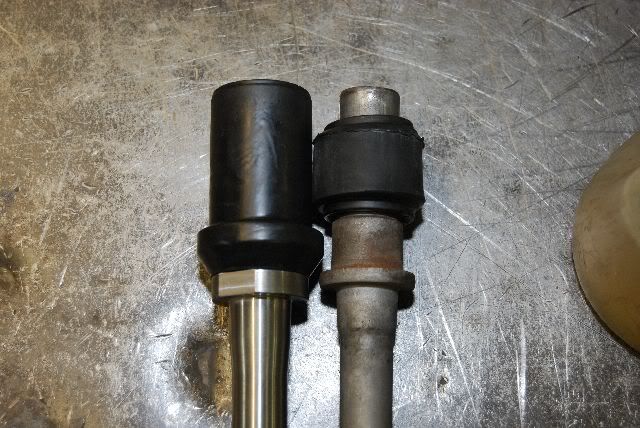I cannot see how a poly bushing can stay on a shaft that has effectivly no nut on the end of it or nothing to retain it. The way a poly bushing is designed, it HAS to rotate on another surface, in this case the "stud" (some call it a pin) for the lower control arm. then it is pressed into the "cup" of the LCA. It goes to reason that if it has to rotate on the pin, then there is NO press fit of the bushing onto the pin. Yes, there is more of a press fit in to the cup due to the larger area of the cup surface and press fit tolerance etc but, what then keeps the whole she-bang on the pin? yes the T-bar is located in the other end of the LCA cup on the end with the hex but this should not be expected to hold the LCA AND bushing in place. THere is tolerance in the T-bar fore and aft and after the backwards movement, all there is , is a little circlip to be used as a preventive device to keep it from falling out. Of course nothing moves too much due to the tension of the T bars but it percievably cannot prevent all movement depending on how much force being possibly applied to it.
With the rubber, the bushing is pressfit onto the pin, lots of tension to hold it on there, and then the whole pin and bushiing is pressfit into the cup of the LCA. then the whole deal is bolted to the K frame. THe rubber bushing does not "ROTATE" on anything. It "TWISTS" around on itself because it is rubber. THat is one of the properties of rubber that this can be made to work like this. there is NO rotating of one surface on another. Now, if the rubber wears out, yes then it can move around on itself by breaking up internally but still the bushing shell does not rotate on the pin or the outer shell of the bushing does not rotate in the cup. therefore, I would rather have the rubber in the LCA as long as it is in good condition and is of good quality.

















